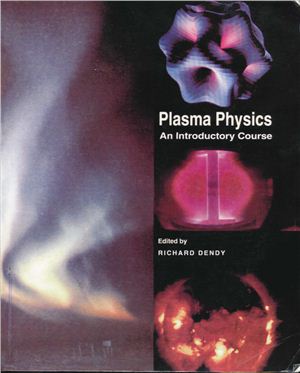For the last 30 years, inteational summer schools in plasma
physics have been held at Culham Laboratory, in Oxfordshire. Culham
is the United Kingdom centre for research in magnetically confined
fusion plasmas, and is the site of the Joint European Torus. This
book has been developed from lectures given at these schools, and
provides a wide-ranging introduction to the theoretical and
experimental study of plasmas and their applications.
The first few chapters deal with the fundamentals of plasma physics, covering such topics as particle dynamics, kinetic theory, waves and magnetohydrodynamics. Subsequent chapters describe the applications and properties of man-made and naturally occurring plasmas. These include magnetically confined fusion plasmas, industrial and laser-produced plasmas, as well as gravitational, solar, space and magnetospheric plasmas. In addition, there are chapters devoted to general phenomena such as turbulence and chaos. The computational techniques employed in modelling plasma behaviour are also described.
Since no prior knowledge of plasma physics is assumed, this book will act as an ideal introduction to the subject for final year undergraduates and beginning graduate students in physics, astronomy, mathematics and engineering.
The first few chapters deal with the fundamentals of plasma physics, covering such topics as particle dynamics, kinetic theory, waves and magnetohydrodynamics. Subsequent chapters describe the applications and properties of man-made and naturally occurring plasmas. These include magnetically confined fusion plasmas, industrial and laser-produced plasmas, as well as gravitational, solar, space and magnetospheric plasmas. In addition, there are chapters devoted to general phenomena such as turbulence and chaos. The computational techniques employed in modelling plasma behaviour are also described.
Since no prior knowledge of plasma physics is assumed, this book will act as an ideal introduction to the subject for final year undergraduates and beginning graduate students in physics, astronomy, mathematics and engineering.

